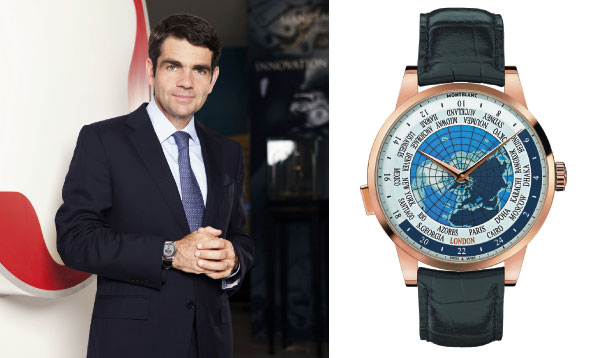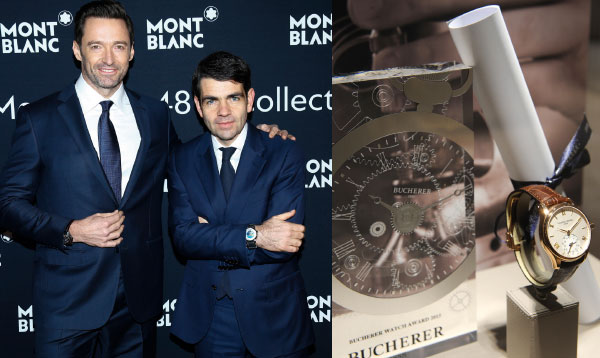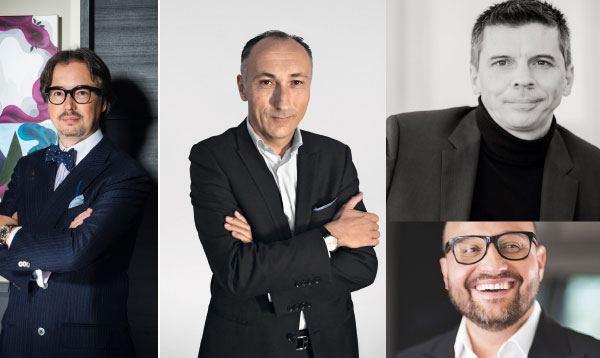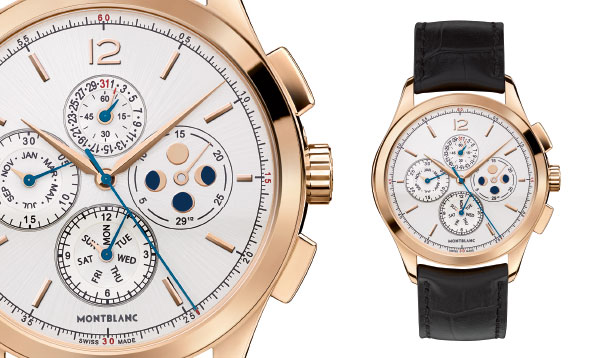
There have been three, starting with an important phase dedicated to grasping what Montblanc represents in the watch industry, complete with its strengths and weaknesses. That meant becoming immersed in the corporate identity codes, understanding the operation of the production units in Le Locle and Villeret, discovering Minerva, becoming acquainted with the teams and getting a feel for their interaction.
I then wanted to ensure even great consistency between the workshops in Le Locle and Villeret, while seeking to do more than just manage their cohabitation, but instead giving them meaning and ensuring the complementary nature of their specific roles. The movement constructor from Le Locle has therefore joined the five others in Villeret in order to benefit from the 150 years of expertise and know-how cultivated by Minerva. By associating these two cultures, we have enhanced the overall coherence and accentuated Montblanc’s strike power, as reflected at the SIHH 2015 with a creation such as the Orbisterrarum. Combining construction principles and technical invention creates value in unprecedented ways.
All of which leads us to the third important area we have focused on since my arrival, geared towards defining key lines of development based on Montblanc’s fundamental principles and which continue to shape its DNA: technical performance and innovation. A company born in Hamburg is naturally steeped in the progressive technical culture typical of the first German industrialist and which became immediately apparent when Montblanc set up in Le Locle. Today, the quality of Montblanc watches is exemplary and they enjoy the lowest return rate I know of in the industry.
What surprised you most about this company with its broad range of skills ?
I couldn’t help asking myself when visiting the four manufacturing facilities : how could a brand remain the same across such diverse geographical areas and skill-sets ? There are many differences between the characters of a German in Hamburg, an Italian in Florence or Swiss employees in Le Locle and Villeret. Leather goods imply an extremely fast pace in terms of new launches, since we present 450 references per year. We sometimes design a collection for a presentation of prototype products the following week and deliveries the month after. The guiding thread is provided by the style signature of elegance tinged with modernity, as well as the omnipresent culture of quality. In a firm of engineers, the thought process is essentially technical and precedes any action in every profession.
After digital pens for tablets, is it now time for digital watches ?
That’s an excellent question ! In my view we cannot avoid considering this, since it is an important link between generations and it is important to build bridges and to think of the future – especially in some parts of the world that are very keen on these accessories.
But we are talking about accessories. Watchmaking is a completely different field and I don’t think it’s a matter of challenging watchmaking paradigms. This phenomenon cannot be ignored and there are two possible reactions : avoiding it or embracing it. In the latter case, originality is key, since the market is already brimming with excellent products starting at 300$. The history of watchmaking is not written with instant answers : this is a new challenge and it provides interesting scope for working on this issue. We should find out more soon.
Which trump cards does Montblanc hold amid the current uncertain economic climate ?
Essentially its boutique network and the pleasure we have in creating products and in demonstrating authenticity. I’ve found at Montblanc the same creative momentum as when I was at the head of Jaeger-LeCoultre, and this raw power leads us to excel in a daily basis. I am truly fascinated by Villeret, which works with raw materials, and the strong watchmaking integrity propels the team upwards. This sense of going beyond ourselves and the pleasure of conveying these values creates a complete chain of fascination that is more easily expressed in our 500 boutiques. This global network guarantees we can bring our new collections to customers much faster and more reliably than other brands working with retailers. Even though our annual watch production currently stands at around 100,000 units, the writing instrument and leather good sectors generate 30 times more customers who enter our boutiques. That means millions of people each year. Our boutiques are regularly transformed into mini “Manufactures” where we organize “SIHH comes to you” type exhibitions to showcase our watchmaking expertise. There were 250 of these events last year. In Geneva these are held once a month ; in Brazil 10 boutiques have adopted this practice, and in China we have 100 boutiques. Customers show a keen interest in rare crafts and this represents an enormous asset !
With which models are you most satisfied so far ?
There are times when one would wish to wear every single watch! In 2014, men were introduced to a couple of remarkable models in the Meisterstück line to mark the 90th anniversary – the QP and the Pulsograph, a 90-piece limited series with a Villeret movement that was 90% pre-reserved even before the launch in our boutiques. For ladies, the major new introduction was the QP Bohème with its round yet original and perfectly balanced shapes. 2015 has plenty of excellent surprises in store, including the Orbisterrarum, which succeeds in bringing something novel and exceptional to such well-trodden ground as that of the worldtimer.






